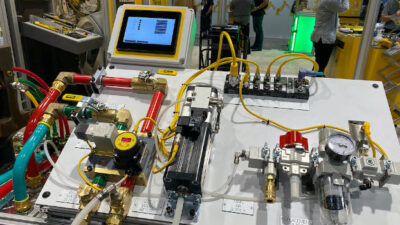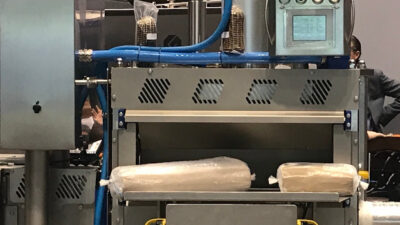Thinking of robotics? Here are the metrics needed to make a smart return-on-investment decision about a robot purchase.

In rough numbers, what does a robot cell cost? What’s the total cost of ownership? How do you justify it? What’s the return on investment (ROI)? What’s the internal rate of return (IRR)?
Here are some rules of thumb. Companies automate for a combination of the following three reasons, to:
1. Save money. Labor savings is the most obvious reason. Labor costs range greatly depending on the industry, geography, if it’s a unionized environment, and other factors.
Typically, labor costs per operator range from a low-end of $20,000 per year to a high-end of $80,000 (all-in costs including wages and benefits). Besides direct labor savings, other benefits of automating often include improved quality reduced scrap, and less rework. These costs are often tougher to quantify but can play a big role in certain applications.
2. Make more money. Existing production equipment is either starved or bottle-necked because people aren’t fast enough to load or unload it. In some cases, a manufacturer could sell more product with the capacity to make it. By using robotics, you can operate faster. This increase in throughput (and revenue) comes at a low cost in relation to new production equipment. In other instances, manufacturers are outsourcing the overflow production to meet demands. By automating the loading and unloading, they reduce or eliminate the need to outsource. (See reason number 1.)
3. Comply with government, regulations, laws, or requirements. In most cases these are ergonomic issues—stresses and strains from high-speed, repetitive tasks or lifting of heavy objects. They result in workers’ compensation claims, lost time injuries, added rotations through strenuous jobs, etc. Usually ergonomics doesn’t make or break the business decision to automate, but it can be an important factor. From my experience, ergonomic costs can range from 5% to 20% of the direct labor costs.
Other times, the risks are more serious than stresses or strains. Sometimes, the sole motivation is to get people out of hazardous jobs. A robot is a lot easier to replace than a human life.
What does a robot cell cost?
A typical, single robot cell is $300,000, plus or minus 50%. Obviously, this is an order of magnitude estimate and will vary depending on the complexity of the process, but generally most single-robot systems will fall into this cost range.
This will include:
- Mid-sized robot
- Robot end-of-arm-tooling or gripper
- Control panel including PLC, operator interface screen (HMI), safety circuits, motor starters, and the like
- Cell guarding
- Customized engineering for the system to complete the desired process
- Some auxiliary equipment, such as conveyors or deburring equipment
- Fabrication, assembly, setup, and runoff at the system integrator’s facility
- Shipping to the site
- Rigging and installation
- Integration with your existing equipment, and
- System-specific operator and maintenance training.
What about ongoing costs?
|
Description |
Cost |
Frequency |
|
Initial spare parts |
$5000 to $20,000 |
One-time purchase with system |
|
Yearly service and maintenance |
$2k to $5k |
Yearly |
|
Yearly replacement and wear items |
$2k to $5k |
Yearly |
Typical costs outside of the main purchase will include spare parts, yearly service, and maintenance, including yearly replacement and wear items.
Return on investment?
Any ROI between 12 months and 36 months is a no-brainer. At a minimum, if you have more than two shifts of operation and all-in labor costs of $35,000 per person, there’s a strong business case to look at automation.
Ken McLaughlin is director, automation systems with JMP Engineering Inc., www.jmpeng.com, London, Ontario, Canada. McLaughlin among the class of 2010 Control Engineering Leaders Under 40. He writes a blog called Robot Shift at https://robotshift.com.
– Edited by Mark T. Hoske, Control Engineering content manager, www.controleng.com.



